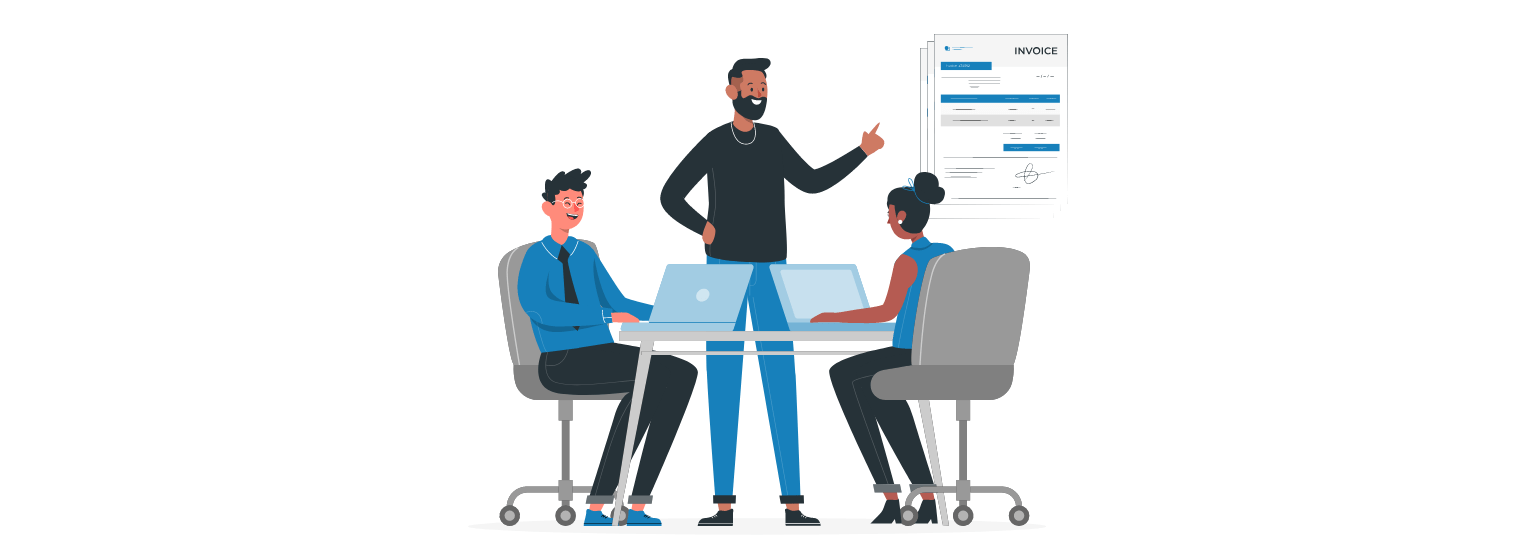Imagine running a business where every dollar counts. You’ve ordered goods, they’ve been delivered, and now you receive the bill. But before you pay, how do you know if everything is correct? Did you receive what you ordered? Is the price right? This is where 3-way invoice matching comes in—a process that not only ensures accuracy but also safeguards your business against costly errors and fraud.
As businesses grow, so do the complexities of managing invoices and payments. Traditional methods often leave room for mistakes, leading to overpayments, missed discounts, or even paying for goods that were never received. 3-way invoice matching changes the game by adding an extra layer of verification, making sure that what you’re paying for is exactly what you ordered and received.
Understanding 3-Way Invoice Matching: How It Works

3-way invoice matching is a verification process used to ensure that the payment you’re about to make is accurate and justified. It involves comparing three key documents:
1. Purchase Order (PO): This is the original document sent to the supplier, detailing what you intend to purchase, including quantities and agreed prices.
2. Receiving Report: This document is generated when the goods or services are received. It confirms the quantity and quality of the items delivered.
3. Invoice: The final document, the invoice, is the bill sent by the supplier requesting payment.
Here’s how these documents work together in 3-way matching:
- Initiation: The process starts with a purchase order, which outlines what the company intends to buy, at what price, and under what terms.
- Verification: Upon receiving the goods or services, the receiving department checks them against the purchase order to ensure that the correct items, in the right quantities, have been delivered.
- Comparison: The invoice received from the supplier is then compared with both the purchase order and the receiving report to confirm that all details align.
- Approval: If all three documents match, the invoice is approved for payment. If there’s a discrepancy, the issue is flagged for resolution before any payment is made.
- Record Keeping: Once the invoice is approved and paid, all related documents are stored together for future reference, ensuring a clear audit trail.
Simplify your growing business with smart vendor invoice management solutions
How 3-Way Invoice Matching Protects Your Business

The real power of 3-way invoice matching lies in its ability to protect your business from financial pitfalls. Here’s how:
- Prevents Overpayments: The process ensures that you only pay for what you actually received, at the price you agreed upon. This prevents overpayments, which can drain resources and affect your bottom line.
- Reduces Fraud: By adding a layer of verification, 3-way matching makes it harder for fraudulent invoices to slip through, ensuring you’re not paying for items that were never delivered.
- Ensures Compliance: Many industries require strict adherence to financial controls. 3-way matching helps ensure that your business complies with regulatory requirements, avoiding potential fines or penalties.
- Improves Cash Flow Management: By preventing errors and overpayments, your business can maintain better control over its cash flow, ensuring funds are available when needed.
- Enhances Supplier Relationships: Consistently paying the correct amount, on time, strengthens your relationship with suppliers, leading to better terms and trust in the long run.
Challenges in 3-Way Matching and How to Overcome Them

While 3-way invoice matching offers significant benefits, it’s not without its challenges. Here are some common hurdles and how to address them:
1. Time-Consuming Process: Matching documents manually can be tedious and time-consuming, especially for businesses dealing with large volumes of transactions.
Solution: Automate the process using software that can perform 3-way matching quickly and accurately.
2. Handling Discrepancies: When documents don’t match, resolving the issue can delay payments and strain supplier relationships.
Solution: Establish clear protocols for addressing mismatches, like setting up direct communication lines with suppliers and using automated alerts.
3. Integration with Existing Systems: For businesses using multiple systems, integrating 3-way matching software can be challenging.
Solution: Choose software that offers seamless integration capabilities, ensuring smooth implementation.
4. Cost of Implementation: Implementing 3-way matching, especially with automation, can involve upfront costs.
Solution: Focus on the long-term savings and efficiencies gained through accurate payments and reduced errors.
5. Employee Training: Ensuring that staff are properly trained on the 3-way matching process can be a challenge.
Solution: Provide comprehensive training sessions and easy-to-follow guidelines to make sure everyone understands how to use the system effectively.
How to Get Started With 3-Way Invoice Matching in Your Business?
Starting with 3-way invoice matching might seem like a big task, but with the right steps, you can smoothly integrate it into your business. Here’s a simple guide to help you get started:
Understand Your Current Process
Take a look at how you currently handle purchase orders, receiving goods, and processing invoices. Identify where things might go wrong—like missing paperwork or delays in approving payments.
Understanding these gaps will help you see where 3-way matching can make a difference.
Pick the Right Tools
Choose software that supports 3-way invoice matching. Look for tools that can connect with your existing systems and automate the process. This will save you time and reduce errors.
Make sure the software is user-friendly so your team can easily adopt it.
Create Clear Procedures
Set up clear steps for how purchase orders, receiving reports, and invoices should be handled. Make sure everyone knows who’s responsible for what and what to do if there’s a mistake.
Write these steps down so everyone can refer to them when needed.
Train Your Team
Train your staff on the new process. Show them how to use the software, what to look for when matching documents, and how 3-way matching will help avoid mistakes.
Regular training will keep everyone up to date, especially if you introduce new tools or procedures.
Secure your business with automated invoice processing.
Real-World Applications of 3-Way Invoice Matching

3-way invoice matching is not just a theoretical concept; it’s a practical tool used across various industries to streamline financial operations. Here are some real-world examples:
- Manufacturing: In the manufacturing sector, where companies deal with large quantities of raw materials and components, 3-way matching helps ensure payments are only made for items that were delivered and meet the required standards.
- Retail: Retailers, especially those with extensive supply chains, use 3-way matching to maintain accurate inventory records and avoid paying for goods that weren’t delivered. This is crucial for managing costs and ensuring that stock levels match what’s recorded in the system.
- Healthcare: Hospitals and healthcare providers rely on 3-way matching to manage payments for medical supplies and equipment. This ensures that they are only paying for the items they actually received, which is vital in an industry where precision and accuracy are paramount.
- Construction: In construction, where projects involve multiple vendors and suppliers, 3-way matching ensures that payments are made only for the materials and services actually received, reducing the risk of disputes and ensuring project budgets are adhered to.
- Food & Beverage: The food and beverage industry uses 3-way matching to manage the complexities of perishable goods, ensuring that payments are made only for items that meet quality standards and were delivered on time.
Comparing 3-Way and 2-Way Matching: Why the Extra Step Matters

You might wonder, why go through the trouble of 3-way matching when 2-way matching (comparing just the purchase order and invoice) seems simpler? The answer lies in the level of control and accuracy.
- 2-Way Matching: This process checks that the invoice matches the purchase order. It’s quicker but misses a critical step—verifying that the goods or services were actually received.
- 3-Way Matching: By adding the receiving report into the mix, 3-way matching provides a more comprehensive check. This extra step ensures that you’re not paying for items that never arrived, making it a safer and more reliable option.
Conclusion: The Value of 3-Way Invoice Matching
3-way invoice matching is more than just a financial control; it’s a strategy that protects your business from errors, fraud, and unnecessary costs. Its important to ensure that every payment is backed by matching documentation and maintain accurate financial records, while complying with regulations, and build stronger relationships with your suppliers.
If your business isn’t already using this process, now is the time to consider implementing it. The peace of mind and financial security it offers are well worth every penny of the investment.



